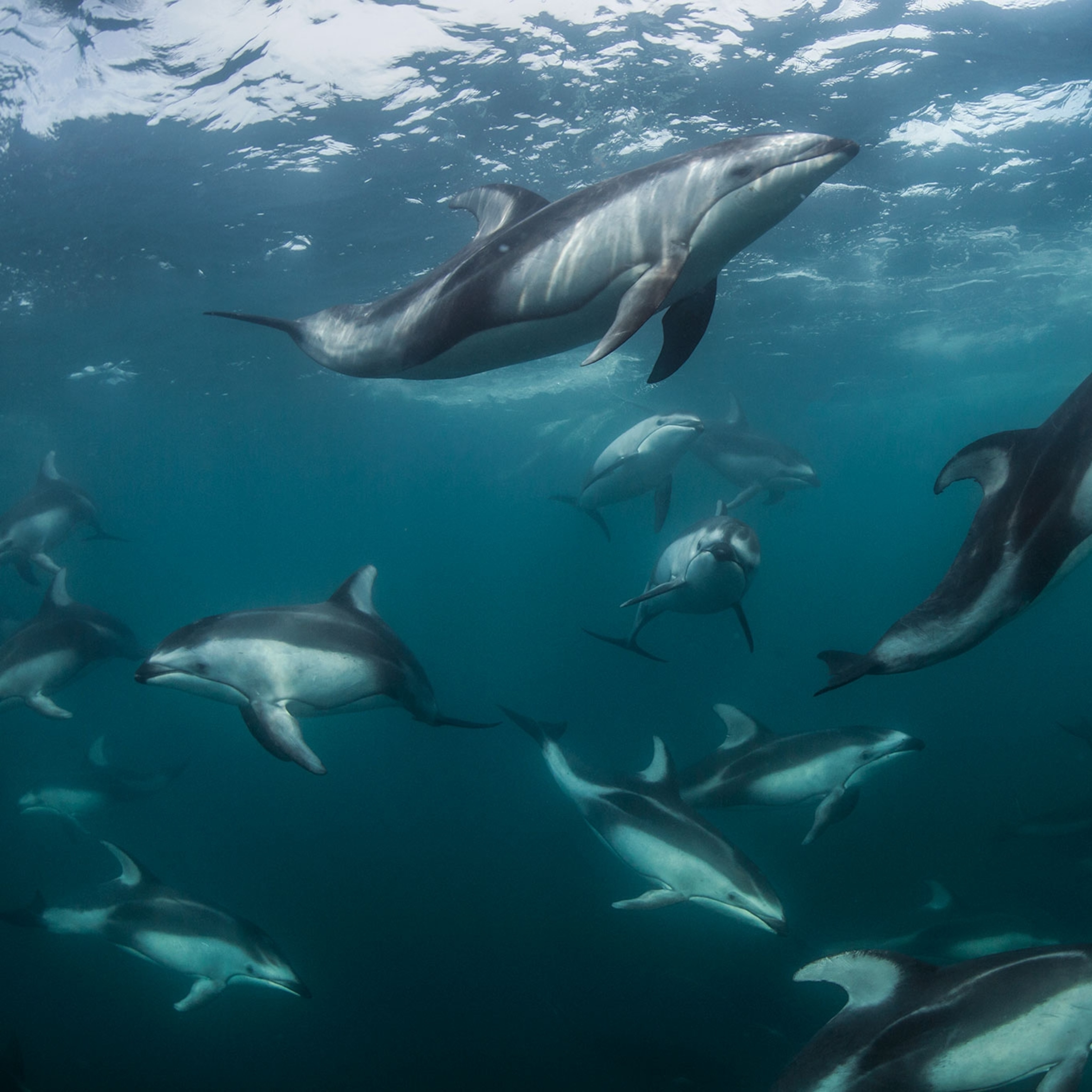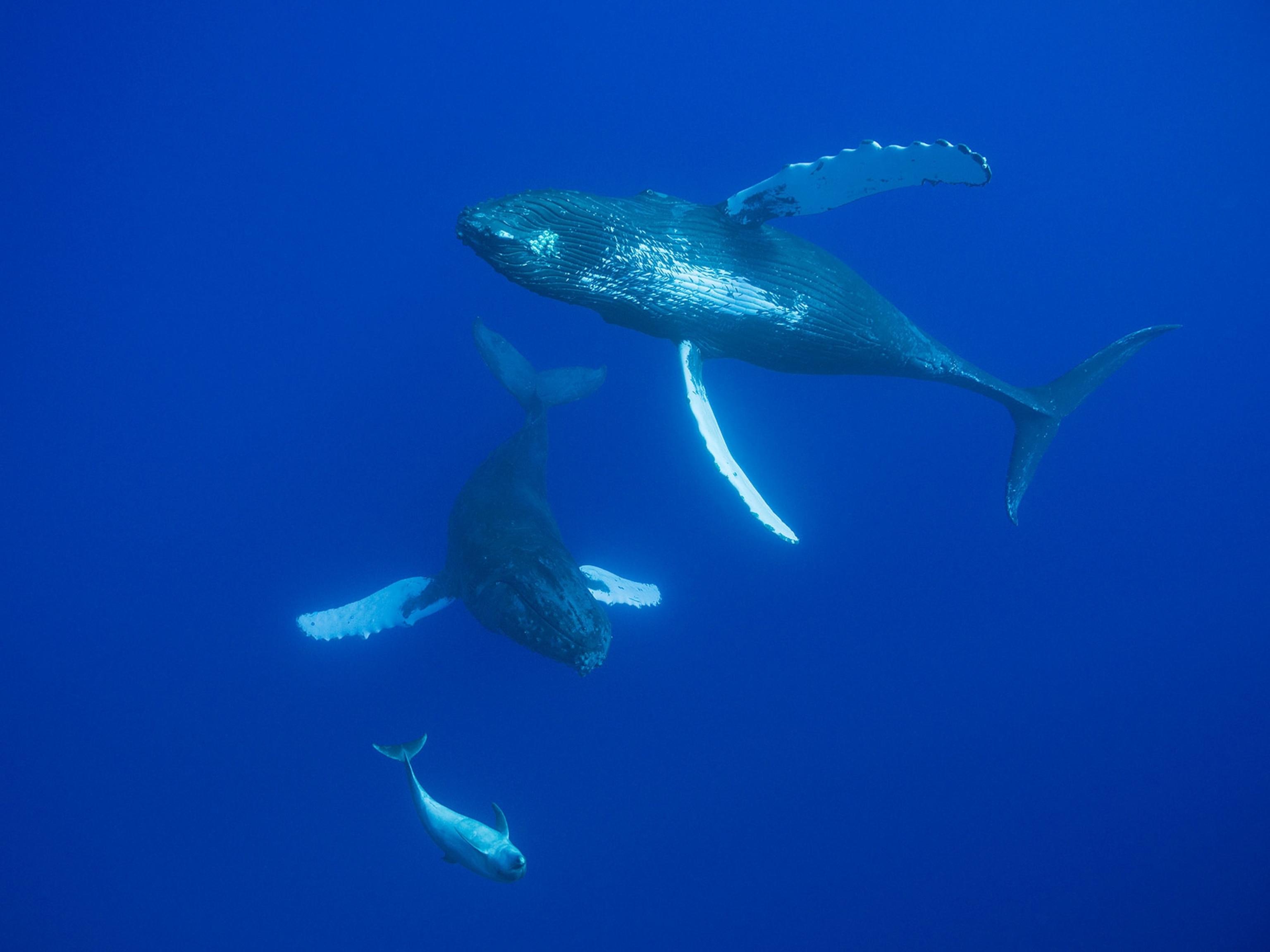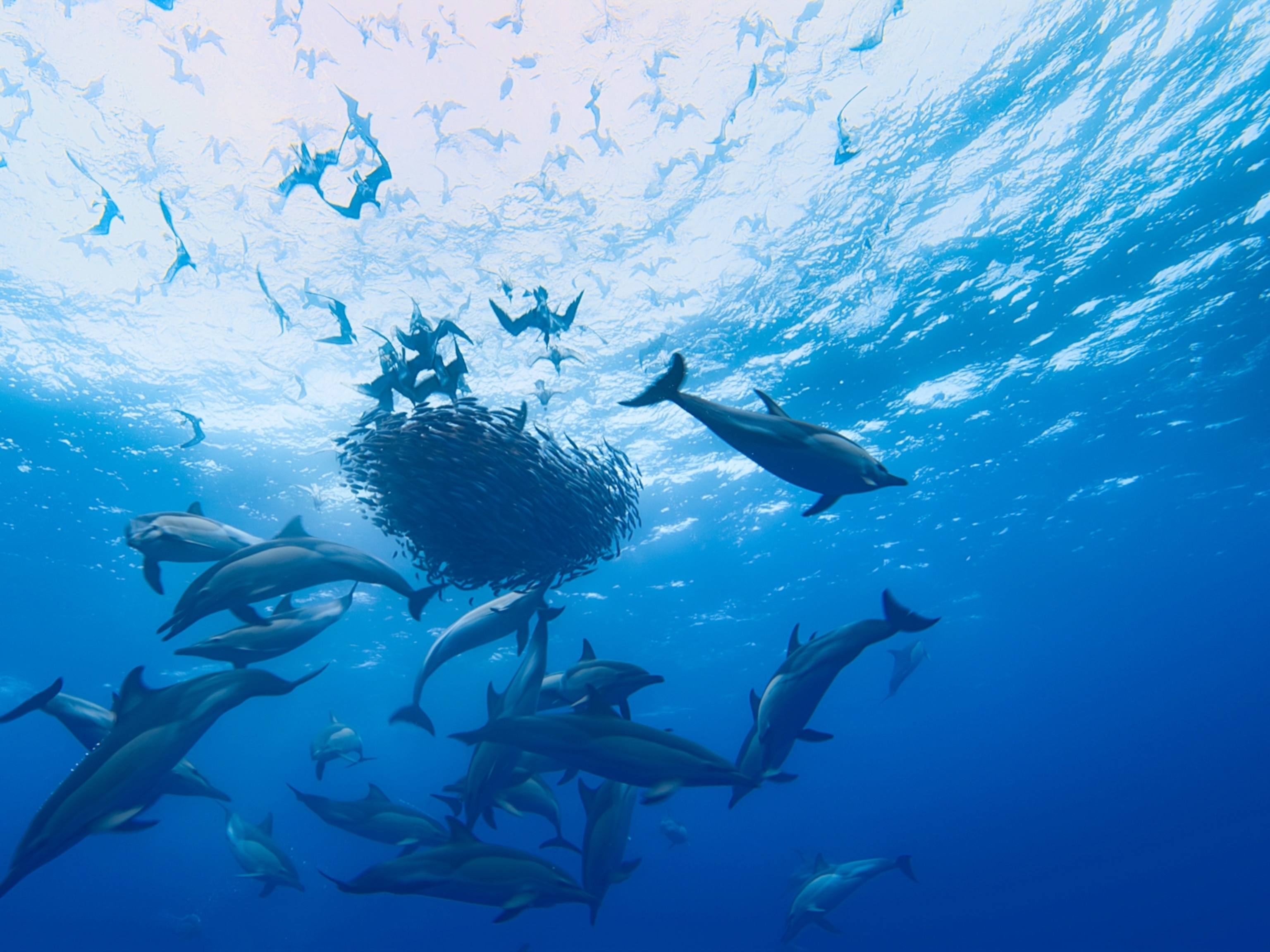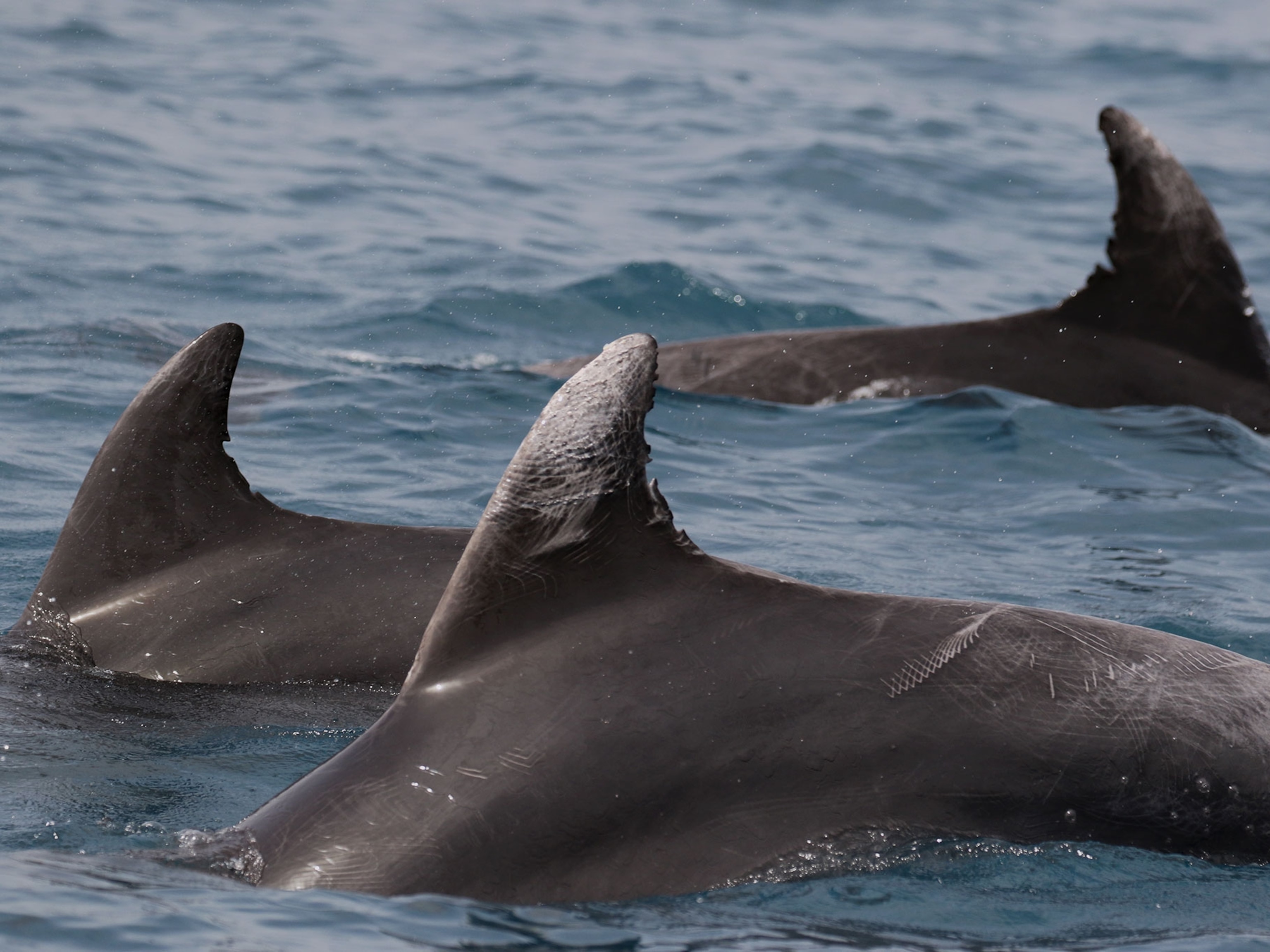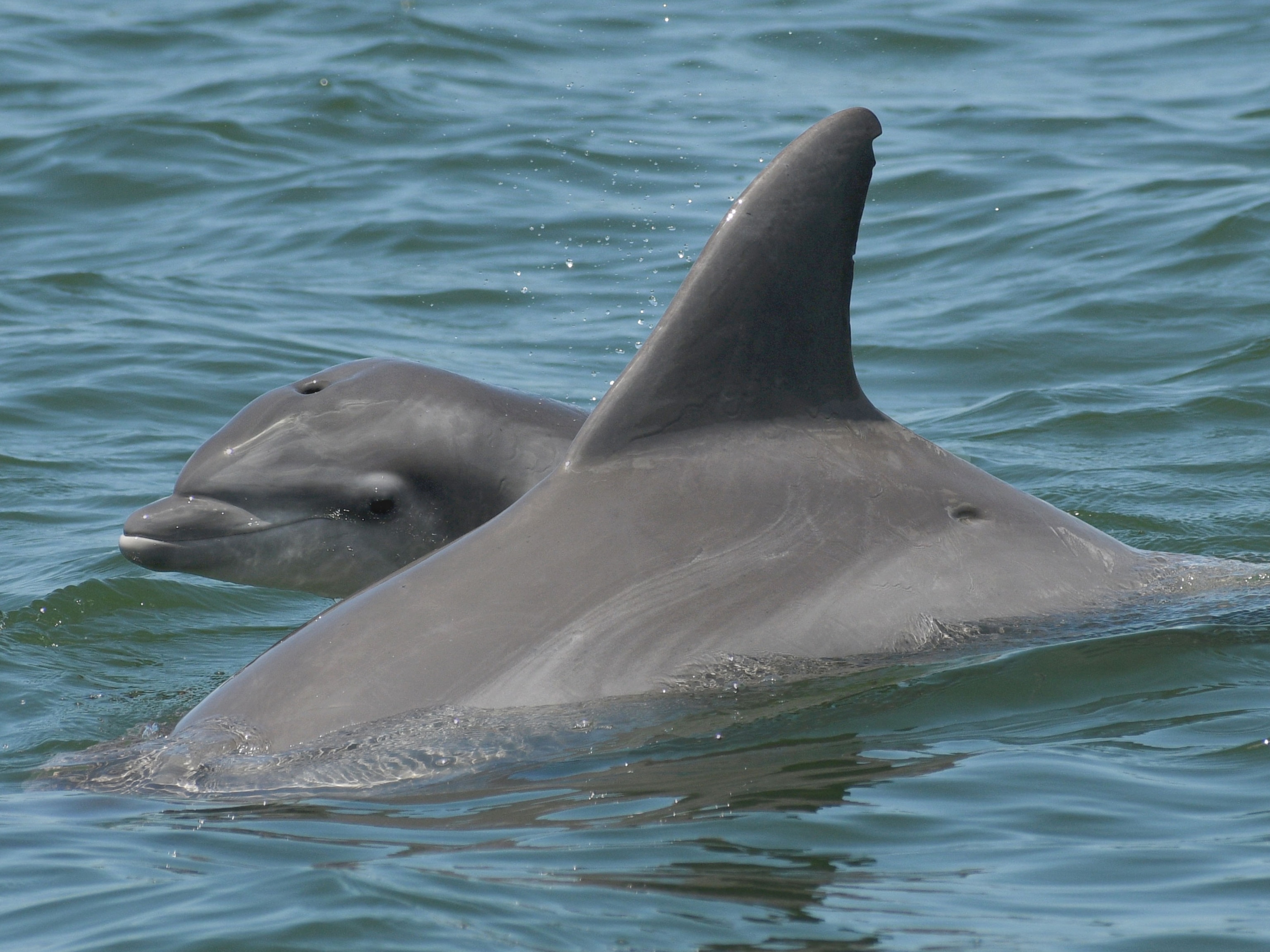
Dolphins Recorded Having a ‘Conversation?’ Not So Fast.
A researcher in Russia claims to have evidence that dolphins can use words and sentences, but marine mammal experts remain unconvinced.
Dozens of dolphin communication patterns, including the animals’ familiar whistles, clicks, and body postures, have been fascinating scientists for years. But one big question has remained frustratingly elusive: Do these highly intelligent mammals possess their own spoken language?
This week, headlines have been swirling about a paper published in the St. Petersburg Polytechnical University Journal: Physics and Mathematics that seemed to offer tantalizing signs of dolphinese. Two Black Sea bottlenose dolphins were recorded exchanging a series of sounds that resembled “a conversation between two people.” The dolphins took turns producing the sounds and did not interrupt each other, according to study author Vyacheslav Ryabov, a senior researcher at the T. I. Vyazemsky Karadag Scientific Station in Russia.
Ryabov suggests that the variation seen in these pulses represents the equivalent of phonemes, or words, and that the strings of pulses could reasonably be considered dolphin sentences.
However, many of the world’s leading experts in dolphin communication remain, shall we say, unconvinced.
“It is complete bull, and you can quote me,” says Richard Connor, a marine biologist at the University of Massachusetts-Dartmouth and a researcher of dolphin social interactions for more than 30 years.
“The biggest problem,” says Connor, “is that now when people make real scientific discoveries on dolphin communication, the public, having been exposed to this nonsense, will not be impressed because they will think Russian researchers already showed that they have language.”
The Signal and the Noise
While the findings presented in Ryabov’s paper may seem exciting and new, scientists who have spent decades studying dolphin communication point instead to a poorly devised experiment.
“Dolphin clicks are highly directional, with the energy focused in front of the animal, much like a flashlight,” says Marc Lammers, an expert in dolphin acoustics and an associate research professor at the Hawaii Institute of Marine Biology.
In Ryabov’s study, the sounds produced by the dolphins were measured at about a 90-degree angle, which Lammers says is the very edge of the flashlight’s beam. This in itself would have a dramatic effect on the data recorded, since this angle would produce a decreased amplitude and different waveforms and frequencies than if the sounds had been measured straight on.
“It’s difficult to make a simple human analogy, but it might be somewhat similar to recording a conversation by people in the other room speaking into pillows,” says Lammers. “Probably not how you would try to learn a new language!”
The fact that the dolphins were recorded while their heads were at the surface of the tank introduces even more issues, thanks to the way the air-water boundary reflects sounds. Lammers says that without controlling for these reverberations, there’s no way to determine what sounds were actually produced by the dolphins and what sounds were artifacts of the recording method.
“The Ryabov paper effectively ignores most of what is currently known about the properties of dolphin clicks, how to measure them correctly, and how they are used by animals in various contexts, and instead lays out the author's own ideas for how dolphin communication might work by weaving together some simple observations with various disconnected notions of acoustics, cognition, and language research,” says Lammers.
Decoding Dolphin
To be clear, many researchers believe that dolphins are capable of complex communication. It’s just that we’ve been searching for signs of something like language for decades, and the evidence is still lacking.
Denise Herzing, research director for the Wild Dolphin Project, has spent more than 30 years trying to understand dolphin communication, most recently by developing pattern recognition algorithms to identify reoccurring sounds and structures that could be the basis for language. (Read more about Herzing’s work decoding dolphin communication patterns.)
“We know dolphins are capable of understanding artificially created language, both acoustic and gestural, and abstract concepts,” says Herzing. “However, we simply do not have the data to suggest that they use words or labels in the wild.”
And the fact that the dolphins in Ryabov’s experiment did not seem to interrupt each other? Herzing says we’ve known dolphins can exchange sound back and forth without overlap since 1979.
“Many, many animals across the animal kingdom will avoid signal masking and thus time their vocalizations accordingly,” says Stephanie King, a research fellow at the University of Western Australia and member of the Shark Bay Dolphin Research Alliance.
“This by no means should be compared to human language,” says King.
Several researchers also expressed frustration at the way the story percolated through cyberspace without enough of a critical eye.
“This type of research and the resultant media coverage does an extreme disservice both to the animals, by anthropomorphizing their behavior, and other scientists, who have spent years painstakingly studying dolphin communication and who base their conclusions on well-designed methods and experimental techniques,” says King.
Lammers said he tries to stick to the philosophy that if you don’t have anything nice to say, don’t say anything at all. However, he made an exception in this case because “in the Internet age, it is too easy to lead people without background knowledge astray.”
For his part, Ryabov stands by the work and mostly deflects his critics by saying he doesn’t believe they read his paper closely enough.
“Ultimately in science, new ideas will only take root if you can convince the community of your peers about the validity of your results, which Ryabov so far fails to do,” counters Lammers.
“That said, I wish Ryabov best of luck with his work and invite him to present his ideas at one of the scientific conferences where these kinds of topics are discussed and debated.”

